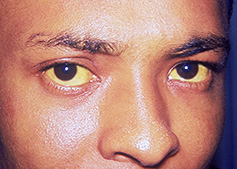PDF 139 KB
Approved Yellow Fever vaccination providers - contact/location details of approved Yellow Fever immunisation providers in SA
Yellow fever is an infection in humans caused by the yellow fever virus. Yellow fever occurs in tropical areas of Africa and Central and South America. Infections have increased in recent years as humans are in greater contact with infected mosquitoes.
Yellow fever does not naturally occur in Australia but the mosquitoes capable of transmitting the virus are present in North Queensland so there is the potential for local transmission from returned travellers who are infected. Strict quarantine measures are in place at Australia’s border to ensure that this does not occur.
The ‘yellow’ in the name refers to the skin colour that occurs when the infection involves the liver.
Yellow fever is a notifiable condition1
In rainforest areas of Africa and Central and South America yellow fever is transmitted between mainly non-human primates and several species of mosquitoes of the genus Haemagogus. Occasional human infection occurs in people who are working or living in these areas.
Large numbers of cases (epidemics) can also occur in urban areas when a human with yellow fever infects the local Aedes mosquitoes (mainly Aedes aegypti) resulting in transmission from human to human via infected mosquitoes.
 A first phase of symptoms is characterised by flu-like symptoms including:
A first phase of symptoms is characterised by flu-like symptoms including:
Most people improve after 3 to 4 days but 15% of people then enter into a second more toxic phase with liver and kidney failure. Of these severe cases around 50% are fatal. Symptoms in the second phase may include:
Yellow fever can be diagnosed with a blood test, although this is not routinely performed in Australia.
(time between becoming infected and developing symptoms)
From 3 to 6 days.
(time during which an infected person can infect others)
Yellow fever cannot be spread from person to person.
There is no specific treatment for yellow fever. Supportive care to treat dehydration and symptomatic relief of pain may be required.
1 – In South Australia the law requires doctors and laboratories to report some infections or diseases to SA Health. These infections or diseases are commonly referred to as 'notifiable conditions'.
Image Courtesy - Department of Health and Human Services, Centers for Disease Control and Prevention (CDC-USA) CDC Dr. Thomas F. Sellers / Emory University.